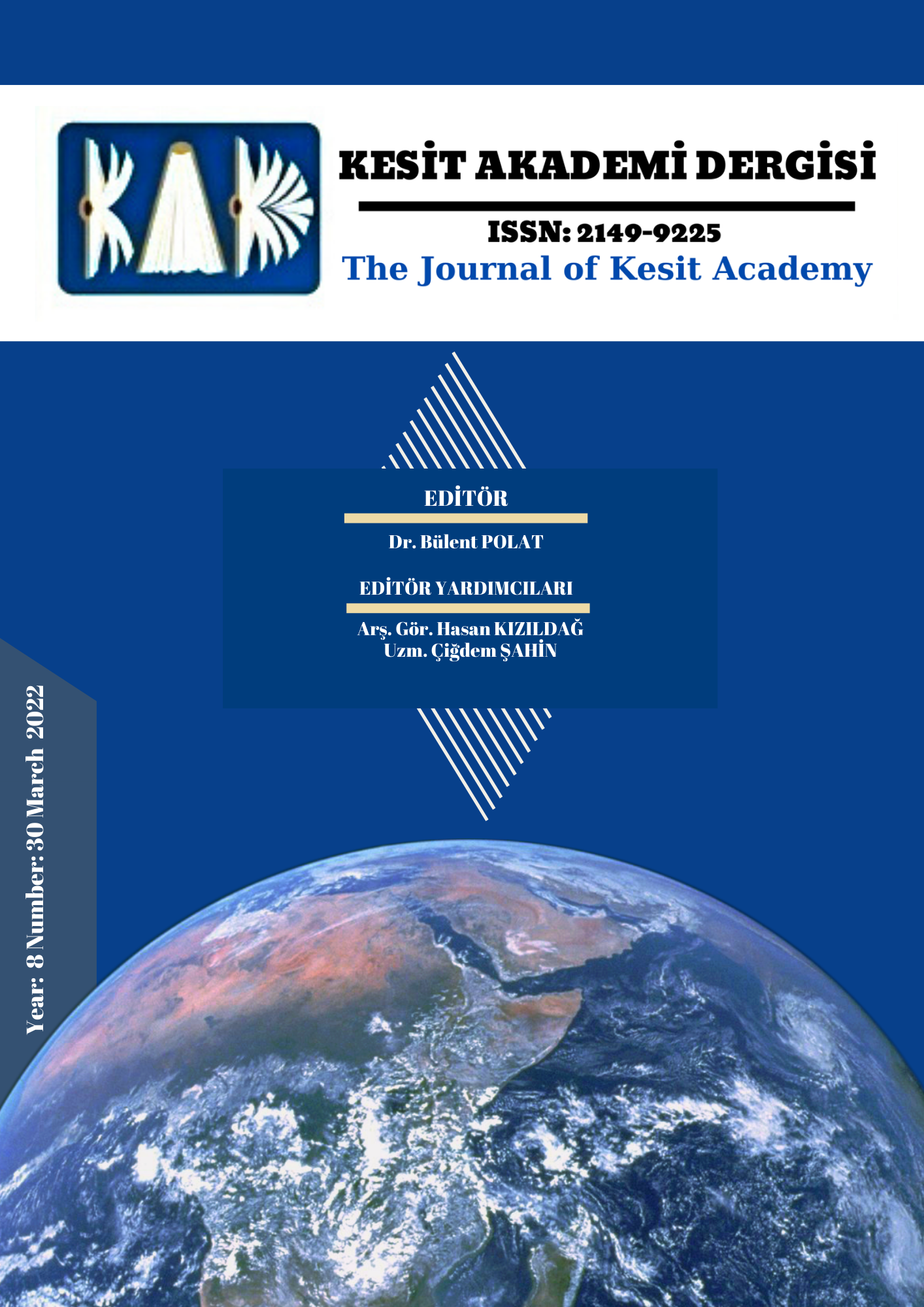Author :
Abstract
Türk Makam Müziğinin önemli sazlarından olan klâsik kemençenin yaklaşık bin yıllık geçmişi vardır. 19. yüzyıla kadar kaba saz takımında köçekçe, oyun havaları, tavşanca, sirto vs. gibi formlarda kullanılan bu saz, Tanbûri Cemil Bey ve Vasilâki Efendi döneminde ince saz takımına katılarak Türk Müziğinin vazgeçilmez sazları arasında yerini almıştır. Kemençe icrâcılığında kendine has tavırları ile bu sazın icrâsının gelişmesine katkıda bulunarak günümüze kadar gelmesini sağlayan birçok usta sanatkâr olduğu bilinmektedir. 20. yüzyılın ikinci yarısından sonraki dönemde Türk Mûsikîsi kemençe icracılığına ve taksim geleneğinin oluşmasına katkıda bulunan İhsan Özgen bu sazın en önemli sanatkârlarındandır. Bu araştırmanın amacı, Türk Müziği ekollerinden biri olan kemençevî İhsan Özgen’in icrâ tavrını belirleyen süslemeleri ve ifade unsurlarını belirlemektir. Araştırmanın evrenini Özgen’in taksim icrâları, örneklemini ise Acemkürdî kemençe taksimi oluşturmaktadır. Bu çalışmada Özgen’in Acemkürdî makamında yapmış olduğu kemençe taksimi notaya alınmış ve daha sonra taksimin teknik analizi yapılmıştır. Teknik analiz ile Özgen’in kemençe icrâ üslûbunu ortaya çıkaran süsleme teknikleri ve ifade unsurları analiz edilip örneklerle açıklanmıştır. Araştırma bulguları doğrultusunda; Özgen’in süsleme tekniklerini ustaca kullanıp en fazla çarpma, glissando ve vibrato tekniklerini kullandığı, kişisel motifleri taksimin farklı yerlerinde motif geliştirerek kurduğu ve kendine özgü tavrıyla Türk Müziği geleneğine bağlı bir icrâ tavrı sergilediği sonucuna varılmıştır.
Keywords
Abstract
The classical kemenche, which is one of the important instruments of Turkish Maqam Music, has a history of about a thousand years. Until the 19th century, köçekçe, frolic, Tavşanca, sirto etc. were used in the coarse instrument set. This instrument, which is used in forms such as these, joined the fine instrument team during the reigns of Tanbûri Cemil Bey and Vasilâki Efendi, and took its place among the indispensable instruments of Turkish Music. It is known that there are many master craftsmen who have contributed to the development of this instrument with their unique attitudes in the performance of the kemenche and made it reach the present day. İhsan Özgen, who contributed to the performance of the Turkish music kemenche and the formation of the taksim tradition in the period after the second half of the 20th century, is one of the most important artists of this instrument. The aim of this research is to determine the ornaments and expression elements that determine the performance style of kemencheist İhsan Özgen, one of the Turkish Music schools. The universe of the research is Özgen's taksim performances, and the sample is Acemkürdî kemenche taksim. In this study, the kemenche taksim that Özgen made in Acemkürdî maqam was notated and then the technical analysis of the taksim was made. With technical analysis, the ornamentation techniques and expression elements that reveal Özgen's kemenche performance style are analyzed and explained with examples. In line with the research findings; It has been concluded that Özgen uses the ornamentation techniques skillfully, uses the most striking, glissando and vibrato techniques, develops his personal motifs by developing motifs in different parts of the taksim, and exhibits a performance style connected to the Turkish Music tradition with his unique attitude.
Keywords
- Akdoğu, O. (1989). Taksim nedir nasıl yapılır. İhlas A.Ş. İzmir Tesisleri.
- Aksoy, B. (1991). Avrupalı gezginlerin gözüyle Osmanlılarda mûsiki *Yayımlanmamış Dok- tora Tezi+. İstanbul Üniversitesi Sosyal Bilimler Enstitüsü.
- Çolakoğlu, G. (2008). Anadolu’dan Balkanlara armûdi biçimdeki kemençeler *Yayımlanma- mış Doktora Tezi+. İstanbul Teknik Üniversitesi Sosyal Bilimler Enstitüsü.
- Gazimihal, M. R. (1961). Mûsiki sözlüğü. Milli Eğitim Basımevi.
- Gönül, M. (2010). Nevres Bey’in ud taksimlerinin ve ud eğitimine yönelik alıştırmaların Oluş- turulması *Yayımlanmamış Doktora Tezi+. Selçuk Üniversitesi Eğitim Bilimleri Enstitüsü.
- Gunca, A. (2007). Kemençe ney ve tanbur için orkestral yazım tekniği *Yayımlanmamış Sa- natta Yeterlik Tezi+. İstanbul Teknik Üniversitesi Sosyal Bilimler Enstitüsü.
- Menemencioğlu, H. (1970). Kemençe hakkında etüt. Mûsikî Mecmuası, 280, 4-13.
- Oran, A. N. (2004). Keman metodu. Gökhan Matbaacılık ve Mücellithanesi.
- Öztuna, Y. (1974). Türk mûsikîsi ansiklopedisi. Milli Eğitim Basımevi.
- Sarı, A. (2012). Türk müziği çalgıları. Nota Yayıncılık.
- Torun, M. (1996). Ud metodu. Çağlar Yayınları.
- Uluç, Ö. M. (2006). Müzik sözlüğü. Yurt Renkleri Yayınevi.
- Yahya, G. (2005). Ud metodu. Yurt Renkleri Yayınevi.
- Yavuzoğlu, N. (2010). Uygulamalı müzik teorisi. İnkılâp Kitabevi.
- Zeren, A. (1995). Müzik fiziği. Pan Yayıncılık.
- URL 1: Fikret Karakaya “Saz ve söz meclisi” https://www.youtube.com/watch?v=oLLMStccpJM Erişim Tarihi: 20.03.2021
- URL 2: İhsan Özgen “Acemkürdî Taksim” https://www.youtube.com/watch?v=SyyEul6ExGA Erişim Tarihi: 13.01.2021





